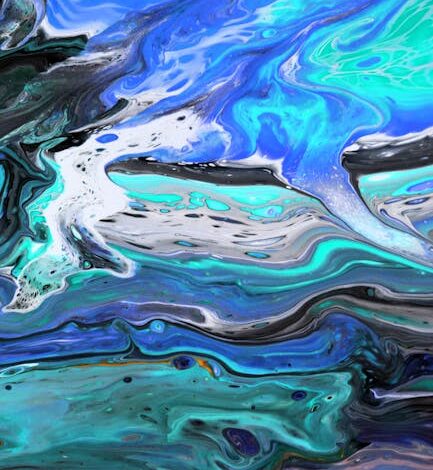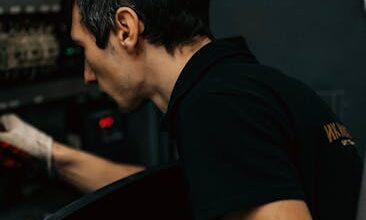Beyond the Flat Canvas: The Power of Layers in AI Image Generation

The world of digital creativity is a constant whirlwind, isn’t it? Just when we think we’ve grasped the latest innovations, something new drops that completely reshapes the landscape. For anyone involved in visual arts, design, or content creation, the conversation around generative AI has shifted from a novel curiosity to an indispensable part of the toolkit. And at the heart of this evolving dialogue, Adobe has consistently pushed the boundaries, aiming to empower creators rather than replace them. Their latest announcement, surrounding the new iteration of Firefly, Adobe Firefly Image 5, feels like one of those pivotal moments.
This isn’t just another incremental update; it’s a significant leap forward, particularly with the introduction of layers and the ability to craft custom models. These aren’t just technical specifications; they’re game-changers that promise to infuse AI-generated art with a level of control and personalization that was, until recently, the exclusive domain of traditional manual creation. Let’s delve into why these developments are so crucial for the future of creative work.
Beyond the Flat Canvas: The Power of Layers in AI Image Generation
For years, one of the primary hurdles in AI image generation, even with the most sophisticated models, has been the output’s “flatness.” You’d generate an incredible image, but if a minor detail was off – say, a character’s arm position or the color of a background element – your options were often limited to regenerating the entire image or painstakingly editing it in a separate program. This often felt like trying to paint over a finished oil painting with a broad brush; it lacked the finesse and non-destructive control that professional artists demand.
Enter layers in Adobe Firefly Image 5. If you’ve ever used Photoshop or Illustrator, you understand the fundamental importance of layers. They allow you to build an image piece by piece, isolating elements, adjusting colors, applying effects, and refining compositions without affecting other parts of the artwork. Now, imagine bringing that granular control to AI image generation. This means you could, for instance, generate a detailed landscape, then add a character on a separate layer, generate specific clothing for them, and even adjust their lighting – all within the Firefly interface, maintaining individual control over each component.
Opening New Avenues for Iteration and Refinement
This isn’t just a convenience; it’s a paradigm shift for creative workflows. Artists can now treat AI-generated elements not as final outputs, but as building blocks. They can experiment with different backgrounds, foregrounds, textures, and objects, stacking them, rearranging them, and refining them much like a digital collage. This collaborative dance between human intention and AI generation fosters a more iterative and flexible creative process. It means less time spent wrestling with prompts to get a perfect single image, and more time composing, layering, and perfecting a vision that truly aligns with the artist’s intent.
It bridges the gap between the initial “aha!” moment of an AI-generated idea and the painstaking, precise work of a professional artist. Firefly Image 5 transforms from a purely generative tool into a powerful co-creation platform, allowing users to leverage the AI’s speed and breadth while retaining the nuanced control that defines true artistry.
Your AI, Your Style: The Rise of Custom Models and Personalization
Another common critique of early AI image generation was the tendency towards a “generic” aesthetic. While impressive, many outputs, particularly from public models, could sometimes feel homogenized, lacking the unique stylistic fingerprints that define an artist or a brand. Adobe Firefly Image 5 addresses this head-on by allowing creators to make custom models.
This capability is a monumental step towards truly personalized AI assistance. Imagine you’re a designer for a specific brand with a very particular visual identity – unique color palettes, photographic styles, or illustrative aesthetics. Or perhaps you’re an artist with a distinct signature style that you’ve cultivated over years. With custom models, you can now train Firefly on your own proprietary dataset – your past work, brand assets, or specific visual preferences. This essentially teaches the AI to speak in *your* visual language.
Beyond Generic: Brand Consistency and Artistic Uniqueness
The implications for businesses and professional artists are profound. For marketing teams, this means generating campaign assets that are instantly on-brand, consistent across various platforms, and aligned with their established visual guidelines, all with unprecedented speed. For artists, it means an AI assistant that understands and can generate variations in their personal style, freeing them from repetitive tasks while maintaining their unique creative voice.
Furthermore, Adobe’s move to support more third-party models indicates a broader vision of an open, extensible ecosystem. This isn’t just about Adobe’s in-house tech; it’s about fostering an environment where creators can leverage a diverse array of specialized AI models, further tailoring their tools to their specific needs. This flexibility is key to ensuring that AI remains a tool that empowers, rather than dictates, creative expression.
Expanding the Canvas: From Images to a Multimedia Creative Hub
While the focus on Firefly Image 5 naturally gravitates towards its visual capabilities, it’s crucial to acknowledge the broader strategic play Adobe is making. The mention of new features on the Firefly website, alongside the ability to generate speech and soundtracks, paints a picture of Firefly evolving beyond just an image tool into a comprehensive multimedia generative suite.
Think about the workflow of a video editor, an animator, or even a podcaster. Creating compelling visual content often requires accompanying audio – voiceovers, background music, sound effects. The integration of speech and soundtrack generation within the Firefly ecosystem streamlines these complex creative processes. A creator could conceptualize an entire scene, generate the visuals, then instantly create a suitable narrative voice and an atmospheric score, all from a unified platform. This holistic approach significantly reduces production time and friction, allowing individuals and small teams to produce rich, multi-sensory content that would typically require a much larger resource investment.
A Glimpse into the Future of Content Creation
This expansion points towards a future where generative AI isn’t just a single-purpose tool but an intelligent creative partner capable of assisting across various modalities. It suggests that Adobe is thinking about the entire creative pipeline, from initial concept to final polished output, and finding ways to infuse AI assistance at every critical juncture. The promise here is not just faster creation, but more integrated, cohesive, and accessible content development for everyone.
The Human-AI Collaboration: A New Era of Creativity
Adobe Firefly Image 5, with its layer support, custom model capabilities, and expanded multimedia functionalities, marks a significant milestone in the journey of generative AI. It’s a clear statement that AI isn’t here to diminish human creativity but to amplify it, to provide new brushes and palettes for artists and designers to explore previously unimaginable horizons.
The ability to work with layers brings a level of meticulous control that grounds AI generation in traditional design principles. Custom models ensure that the unique voice of every creator, every brand, can shine through, countering the risk of homogenization. And the integration of speech and sound paves the way for truly holistic, AI-assisted content creation. This isn’t just about making things faster; it’s about making them more personal, more powerful, and ultimately, more human. The future of creativity is a collaborative one, where the artist’s vision and the AI’s capability dance in perfect harmony, pushing the boundaries of what’s possible.





